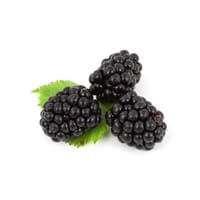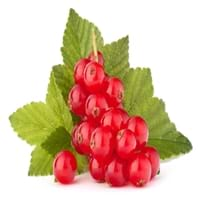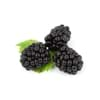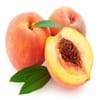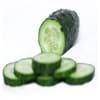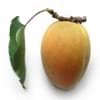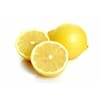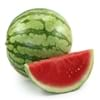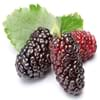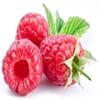Health Benefits
Cancer prevention, Heart care, Increases metabolic rate, Reduces stress, Treatment of dysentary, Treatment of skin Diseases
Cancer prevention, Gout treatment, Heart care, Regulation of heart rate, Treatment of rheumatism
General Benefits
Digestive aid, Maintains healthy cholesterol level, Strengthens bones
Anti oxidant properties, Controls blood pressure, Cures fever, Digestive aid, Healing of wounds, Helps in weight loss, Strengthens bones
Skin Benefits
Hydrates skin, Skin rejuvenation, Skin revitalization
Brightens and lightens complexion, Reduces wrinkles, Treatment of acne
Hair Benefits
Promotes longer and healthier hair
Protects hair
Allergy Symptoms
Facial muscle tension, Pressure in sinus, Respiratory congestion, Runny nose, Sneezing, Tingling sensation in wrist and face
Abnormally rapid heart rate, Anaphylaxis, Breathing difficulty, Hives, Itching, Swallowing difficulties
Side Effects
Nausea, Vomiting, Might cause change of urine color
Possibly unsafe during pregnancy
Best Time to Eat
Best if taken as a breakfast (or empty stomach), As a snack in the late afternoon, Don't consume at night and before bed, Eat the fresh ones, avoid mixing with any other foods, don't eat after meal., Morning time (before lunch)
Best if taken as a breakfast (or empty stomach), As a snack in the late afternoon, Don't eat after meal, Morning time (before lunch)
Vitamin B5 (Pantothenic Acid)
Vitamin C (Ascorbic Acid)
Vitamin K (Phyllochinone)
Calories in Fresh Fruit with Peel
Calories in Fresh Fruit without Peel
Not Available
Not Available
Calories in Frozen Form
Not Available
Calories in Canned Form
Not Available
Calories in Pie
Not Available
Season
Spring, Summer
Summer
Varieties
Prime Ark, Prime Jim, Illini Hardy, Kiowa, Shawnee, Apache, Arapaho, Chester, Hull, Natchez, Navaho and Triple Crown and Von
Rovada, Stanza, Red Lake, Junifer and Jonkheer van Tets
Taste
Juicy, Sweet
Sour, Tart
Origin
Asia, Europe, North America, South America
Europe
Soil Type
Well-drained
Moist, Well-drained
Climatic Conditions
Dry, Warm to hot climate
Cold
Facts about
- There are around 2000 varieties of blackberries throughout the world.
- 80-85 degrees is the ideal temperature for its production.
- Leaves of blackberry tree are used to treat sore throats and mild inflammation of the gums.
- The albino version of red currants known as white currants, are often sold as different fruit.
- Red currant tea is healthy substitute for coffee.
- There are more than 150 varieties of red currants.
Top Producer
United States of America
Russia
Other Countries
China, New Zealand, Serbia, South Africa
Belgium, France, Germany, Ireland, Italy, Netherlands, Poland, Portugal, Scotland, Spain, Sweden, United Kingdom
Top Importer
United States of America
Germany
Top Exporter
Mexico
Russia
Botanical Name
Rubus Fruticosus
Ribes rubrum
Synonym
Rubus Millspaughii or Rubus Laciniatus
Not Available
Subkingdom
Tracheobionta
Tracheobionta
Division
Magnoliophyta
Magnoliophyta
Class
Magnoliopsida
Magnoliopsida
Order
Rosales
Saxifragales
Family
Rosaceae
Grossulariaceae
Species
Rubus fruticosus
R. rubrum
Generic Group
Rose
Saxifrage
Difference Between Blackberry and Red Currant
We might think that Blackberry and Red Currant are similar with respect to nutritional value and health benefits. But the nutrient content of both fruits is different. Blackberry and Red Currant Facts such as their taste, shape, color, and size are also distinct. The difference between Blackberry and Red Currant is explained here.
The amount of calories in 100 gm of fresh Blackberry and Red Currant with peel is 43.00 kcal and 56.00 kcal and the amount of calories without peel is Not Available and Not Available respectively. Thus, Blackberry and Red Currant belong to Low Calorie Fruits and Low Calorie Fruits category.These fruits might or might not differ with respect to their scientific classification. The order of Blackberry and Red Currant is Rosales and Saxifragales respectively. Blackberry belongs to Rosaceae family and Red Currant belongs to Grossulariaceae family. Blackberry belongs to Rubus genus of Rubus fruticosus species and Red Currant belongs to Ribes genus of R. rubrum species. Beings plants, both fruits belong to Plantae Kingdom.
